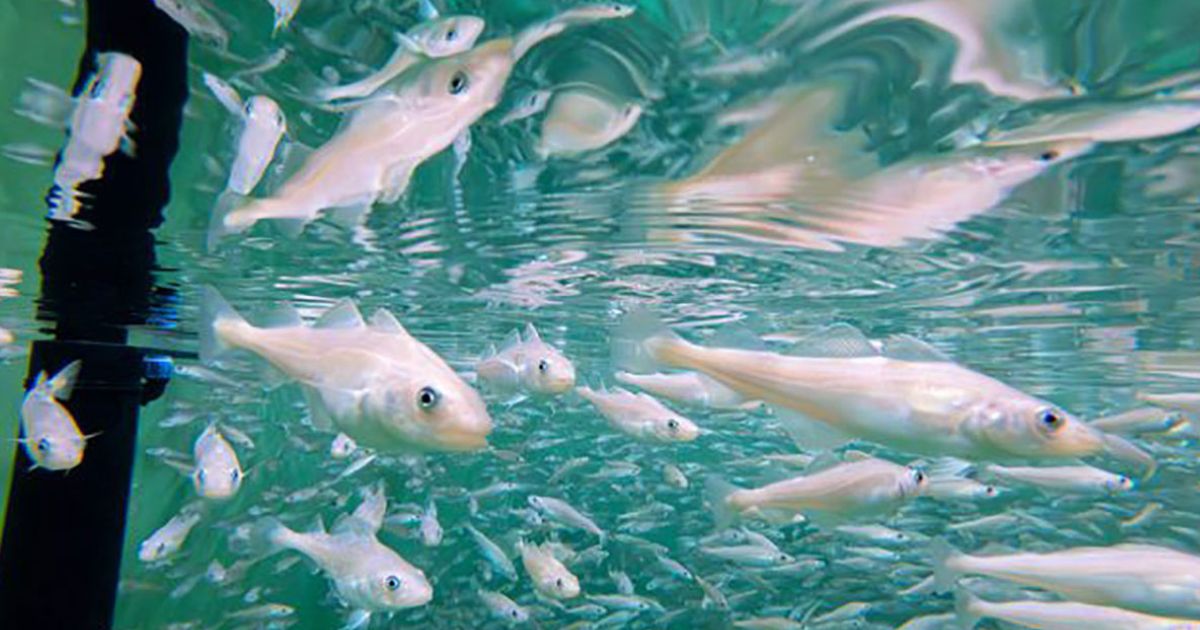Previously, farmed cod in the breeding program could spawn three times before reaching harvest weight. After being selected for growth, they spawn once.
Spawning is undesirable in fish farming. For the farmer, spawning means reduced growth. For the environment, there may be a risk of spreading fertilized eggs in the sea cross with wild fish in the following generation.
Many cod still reach sexual maturity prematurely if light cycles are not manipulated. In the industry however, development is controlled with light.
Breeding for Growth Results in Fewer Spawnings
On behalf of the Ministry of Trade, Industry and Fisheries, Nofima runs the national breeding program for cod, and supplies fertilized eggs to cod farmers.
For six generations, the breeding goal has mainly been growth. Breeding for growth has reduced the number of cod spawnings during the 20 months at sea before slaughter weight from three down to one.
Sexual maturation reduces the availability of resources that can be utilized for rapid growth. Energy is relocated from muscles and liver to gonads. Sexual maturation results in the cod spawning.
Can be Postponed
While it is a prerequisite that cod spawn in a breeding program, spawning is an undesirable trait in commercial farming. Therefore, Nofima wants to put an end to early sexual maturation.
Recently, Nofima breeding scientist Anne Kettunen led a major trial. She tested the extent of early sexual maturation on more than a hundred full-sibling families in net-pens in Nordland. The study showed that 84% of females and 91% of males reached sexual maturity at two years of age when they were not managed with light. Calculations show that there is considerable genetic variation in early sexual maturation in cod. 33% of the trait depends on genes, the rest on the environment.
“This means that it is possible to breed for lower frequency of early sexual maturation, and thus further reduce the risk of spawning in net-pens.
In Nofima’s breeding work, we are looking for several solutions, where breeding is one of them. Of course, production management at the fish farms is also part of the solution,” says Kettunen.



